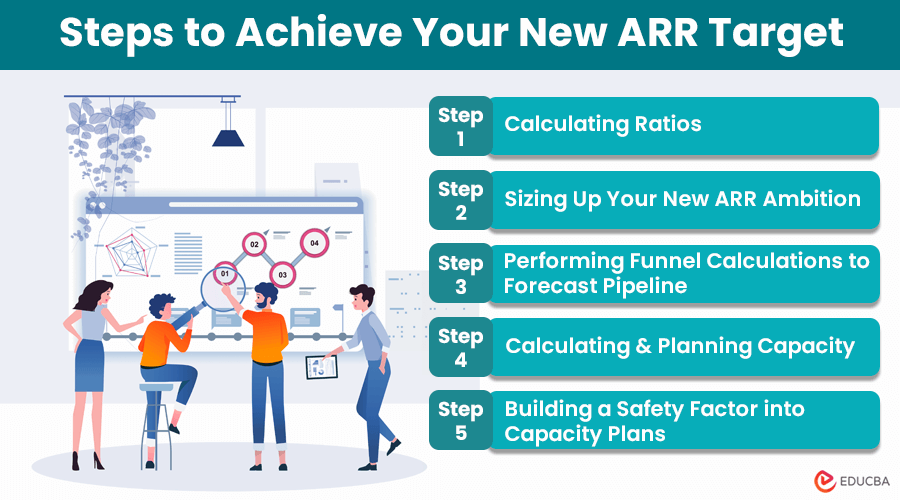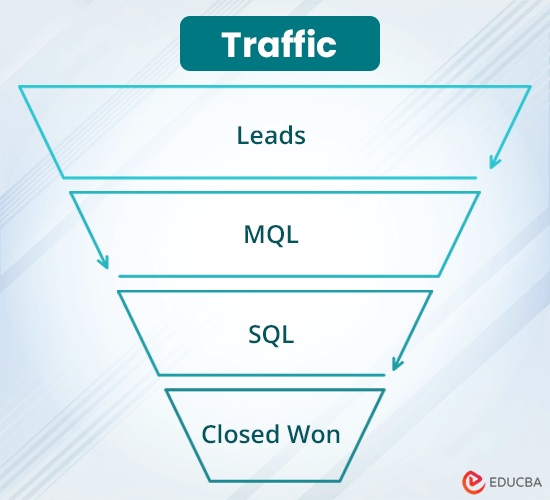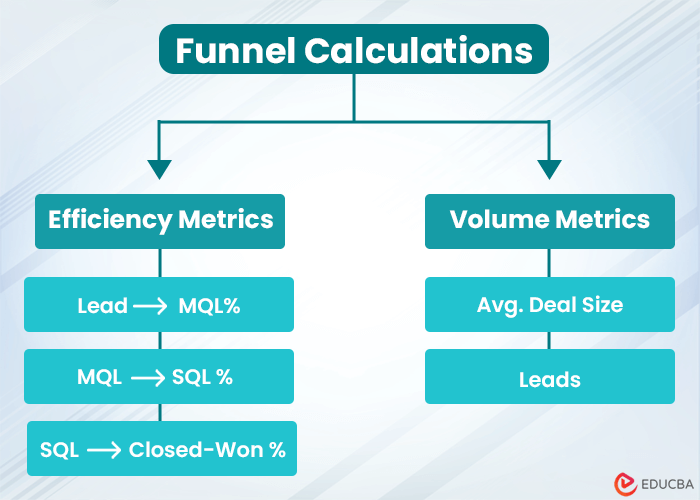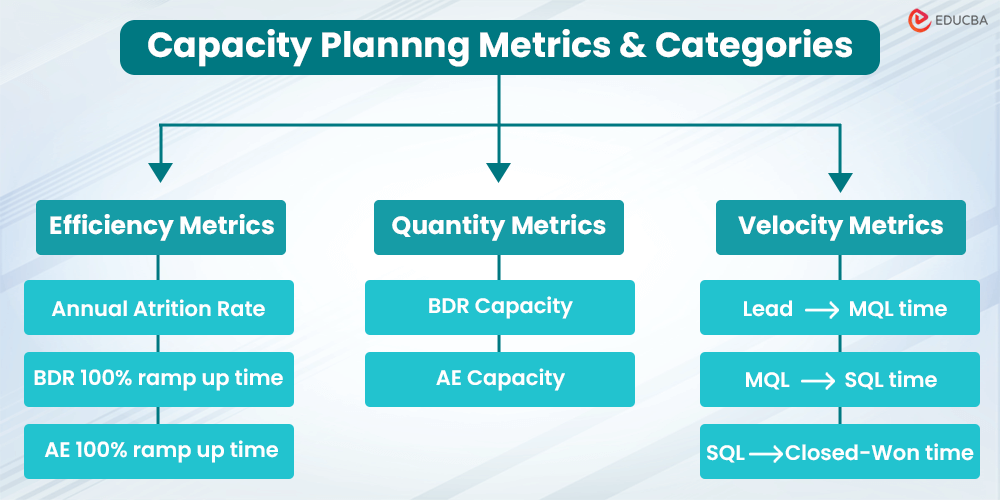
Why Do You Need an ARR Growth Plan?
With economic uncertainty, it is important for B2C Saas, B2B SaaS, and PaaS businesses to focus on increasing revenue. For this, startups and growing companies need to set a new ARR target and create a foolproof plan to achieve that target. You can also consider business budgeting and planning software to create reliable and cost-efficient sales plans and forecasts for your company.
In this article, let us walk you through making a top-down plan to achieve your new business ARR. The method described below will help you chart a course towards your New ARR.
Steps to Create Your New ARR Growth Plan
With the following steps, you will have a timeline and resource plan to help you hit your revenue growth targets. However, verify whether your business can afford to focus on new ARR before diving into revenue planning.
Step #1: Calculating Ratios
Before diving headfirst into customer acquisition, first consider a couple of ratios, such as:
- LTV-CAC Ratio: This metric reveals the efficiency of your customer acquisition. A high LTV to CAC ratio suggests you are acquiring customers cost-effectively, while a low ratio might indicate overspending.
- Opex to S&M Ratio: This compares your total operating expenses (Opex) to your Sales and Marketing (S&M) spend. It reflects your breakeven point for LTV-CAC.
Step #2: Sizing Up Your New ARR Ambition
Next, let’s gauge the ideal revenue growth rate you want to chase. To help answer this, evaluate how aggressively you can pursue New ARR growth:
- LTV-CAC ratio < Opex to S&M ratio (or a downward trend): This suggests high operating costs or inefficiencies in go-to-market strategy or product offerings. Focus on improving marketing and sales efficiency before ramping up new customer acquisition.
- LTV-CAC near to Opex to S&M ratio: This is an ideal scenario. Proceed with your New ARR plan and consider setting higher than baseline revenue growth goals.
- LTV-CAC ratio > Opex to S&M ratio (or an upward trend): This indicates potential underinvestment in sales and marketing, leading to missed opportunities. Increase your S&M spending strategically and aggressively to maximize New ARR growth.
Step #3: Performing Funnel Calculations to Forecast Pipeline
Funnel calculations forecast the sales pipeline size needed to hit your target.
Let’s assume the following funnel stages.
While crafting your sales funnel calculations, remember to keep it simple – focus on the high-impact assumptions like:
- Volume Metrics: This includes factors like average deal size and the number of leads generated.
- Efficiency Metrics: This looks at conversion rates across various stages of the funnel, including MQL to SQL Conversion Rate %, Lead to MQL Conversion Rate %, and SQL to Closed-Won Conversion Rate %.
When creating a revenue model, remember that your assumptions are crucial. Here are some tips to keep in mind:
- Use historical data as a baseline to avoid biases in these metrics.
- Only add dimensions like market segment or territory if they vary a lot.
- If the differences are small, keep it simple by using the weighted average.
Now, with your assumptions in place, determine the volumes needed at every funnel stage to achieve your New ARR target. Work backward from the last stage of the funnel—the number of Closed-Won deals.
Let’s compute the number of new Closed-Won deals, monthly SQLs, MQLs, and Leads required using the following:
SQLs = Closed-Won Deals / SQL to Closed-Won Conversion Rate %
MQLs = SQLs / MQL to SQL Conversion Rate %
Leads = MQLs / Lead to MQL Conversion Rate %
Note: Deal size and conversion rates vary across geographies and market segments. Ensure to incorporate these if they vary significantly.
Step #4: Calculating and Planning Capacity
Now that you know the lead volumes you need to generate, it’s time to create a capacity plan that will get you there. Capacity matching determines the additional resources (personnel) you require to manage the pipeline.
1. Understand Funnel Velocity
It measures how long it takes to move prospects through stages like turning a lead into a qualified lead (MQL) into a sales-qualified lead (SQL). This timing is crucial because it determines how quickly your team needs to fill its pipeline.
For instance, if it takes six months for leads to convert into closed deals, you need to generate all leads in the first half of the year. Sales development representatives (SDRs) can then convert them into SQLs, and account executives (AEs) can work on closing deals to meet revenue targets. If the velocity is nine months, the pipeline must be filled within three months to reach targets by year-end.
To plan your team’s size, speed, and efficiency:
- Define your recruitment rate or hiring capacity (e.g., # of positions per quarter)
- Consider 100% ramp time for BDR and AE
- Determine BDR/SDR capacity (e.g., 20 SQLs per quarter)
- Factor in AE capacity and attrition rate (e.g., 5 Closed-Wons per quarter)
2. Determine the Gap Between Current and Target Closed-Wons
If your current rate is 50 closed-wons each quarter but need 100, your gap to target is 50 closed-wons per quarter.
You can calculate the number of AEs to hire by:
Step #5: Building a Safety Factor into Capacity Plans
Not everyone you hire will successfully hit their quota. You can use a damping factor to act as a buffer. This is commonly called the quota attainment rate %.
A quota attainment rate of 80% implies that four out of five new hires will meet their quotas. You can compensate for this potential shortfall by hiring additional resources.
Final Thoughts
Creating an effective ARR growth plan is essential for businesses to meet revenue targets in uncertain economic times. By understanding current performance, setting realistic goals, and analyzing funnel metrics, companies can develop strategies to drive revenue growth. Implementing these steps will help businesses navigate challenges and achieve success in reaching their new ARR targets.
Recommended Articles
We hope these steps to create an ARR growth plan help you achieve your new ARR targets. For similar articles, read the following blogs.




